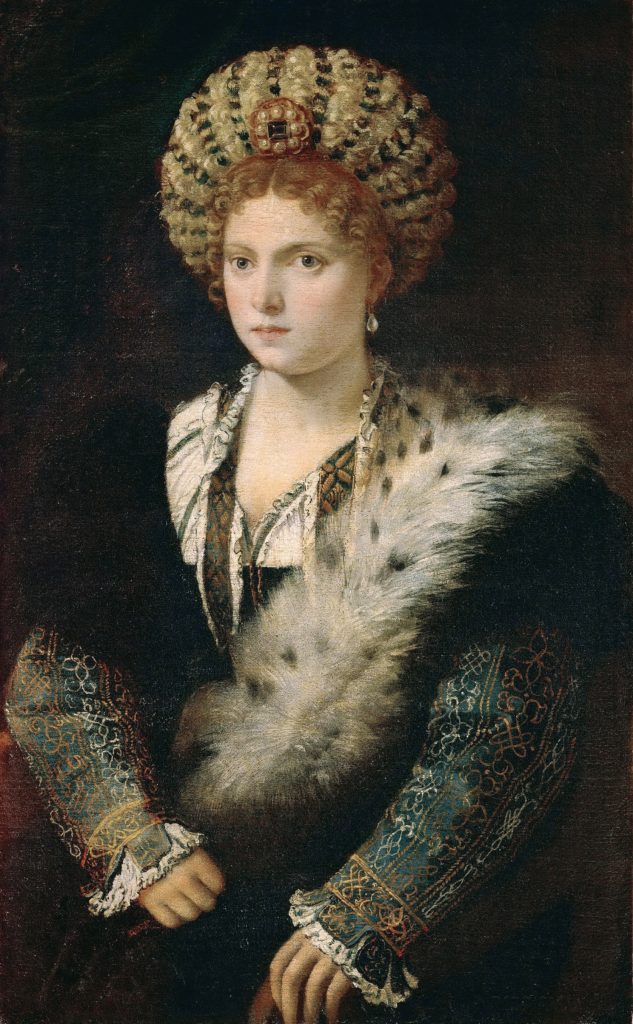Isabella d’Este Gonzaga was the first woman to own a studiolo: a space reserved for her cultural and intellectual interests and enriched with works of art commissioned by her, in which it was possible to listen to music or converse with humanists and princes. Isabella grew up in the refined court of Ferrara and later became Marchioness of Mantua after her marriage to Francesco II Gonzaga, until she was recognised as one of the most influential women of the Renaissance.
Her passion for art led her to collect numerous ancient objects such as cameos, stones, sculptures and coins and to become a great art maecenas, tenacious and stubborn. She became famous for breaking off relations with the court painter Andrea Mantegna after he portrayed her in a manner she did not like. On the contrary, she was very satisfied with Tiziano’s work, so much so that after the first portrait painted between 1529 and 1530, now known only through a copy by Rubens, she commissioned a second one in 1534.
Isabella maintained her strong and tenacious character throughout her life but, burdened by age, she no longer wanted to sit still for hours on end for painters. She therefore ordered Tiziano to paint her portrait, elaborating on the one painted by Francesco Francia twenty years earlier, now sadly disappeared, which the Marchioness liked very much. But even this canvas was not painted from life, in fact the portrait was painted from a work, probably by Lorenzo Costa dated around 1508. Tiziano therefore found himself painting Isabella’s face from a copy of a portrait he had painted some 26 years earlier, which even for an excellent painter must have been a hard challenge! Perhaps precisely because it did not faithfully reflect her actual appearance, the Marquise greatly appreciated Tiziano’s portrait, which depicted her much younger than her 60 years, going so far as to admit in a letter ‘… that she was not of that beauty, which in herself she contains’.
Tiziano portrays Isabella as a half-length figure slightly turned to the left against a dark background, without inserting elements that could distract attention from the subject. The Marquise is depicted as a splendid young noblewoman, her precious robes and fine jewellery telling of her status. The face is characterised by delicate features and soft shapes, framed by light-coloured, wavy hair gathered under the ‘balzo’, a ring-shaped headdress invented by Isabella herself and enriched by a large diadem consisting of a precious stone in the centre and surrounded by pearls. Characterising the robe are the large damask sleeves in blue fabric embroidered with gold and silver threads, while on the left shoulder is a soft stole of spotted white fur.
Tiziano did not paint a simple portrait but the exaltation of Isabella d’Este, for this reason he is not interested in the faithful reproduction of reality but idealises it, showing its nobility and beauty.
The painting kept in the Ducal Palace in Mantua was sold to the Archduke of Austria Leopold Wilhelm of Habsburg and is now in Vienna at the Kunsthistorisches Museum.







